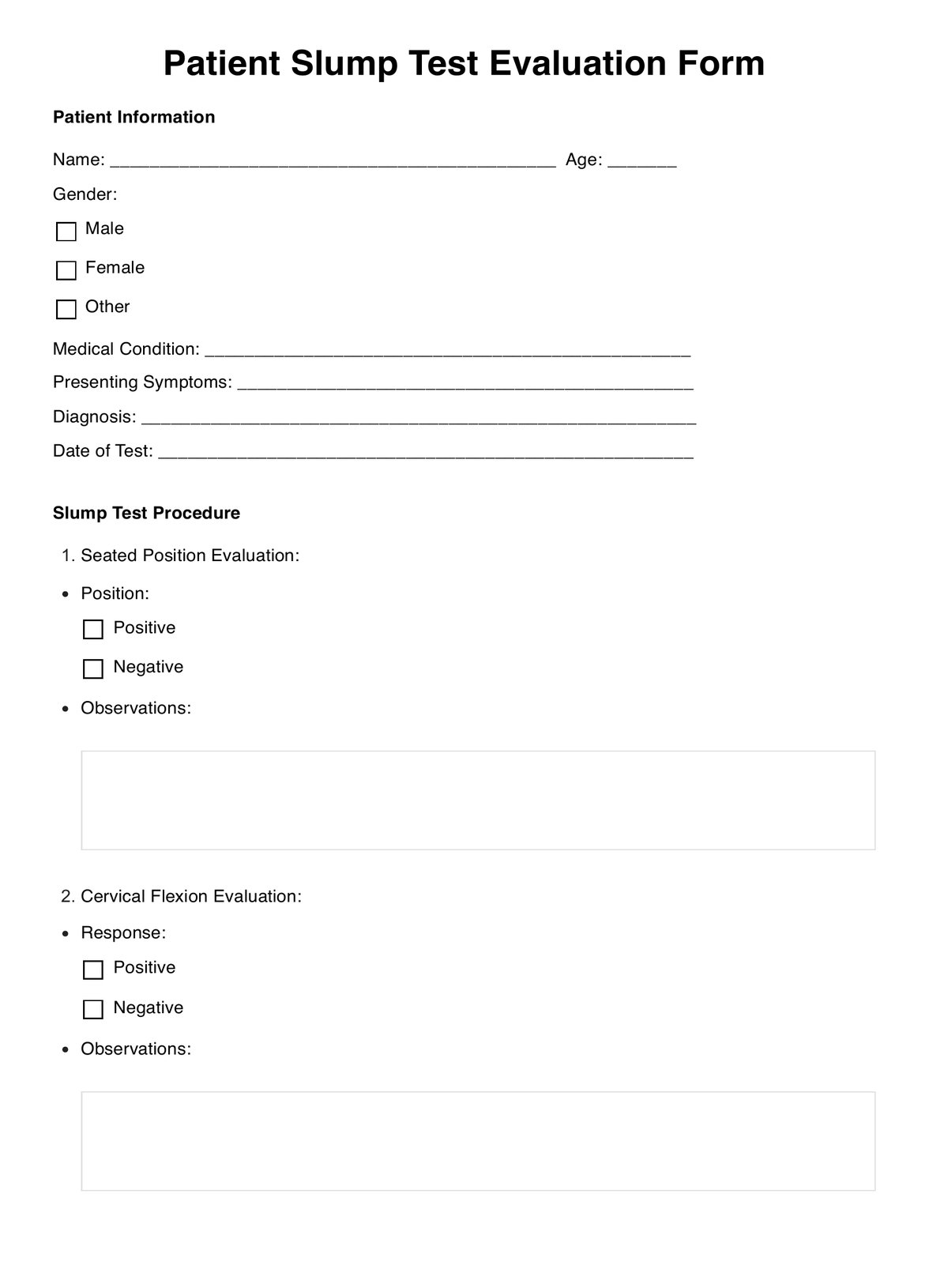Physical therapists, chiropractors, and other healthcare professionals involved in neuromuscular care.

Slump Test
Explore the Slump Test, a crucial clinical tool for identifying neural tension issues like herniated discs and sciatica. Download a free sample today!
Use Template
Slump Test Template
Commonly asked questions
When there's suspicion of neural tension or irritation, such as herniated discs or sciatica.
Symptoms are elicited through carefully executed steps, and findings are recorded to guide diagnosis or treatment.
EHR and practice management software
Get started for free
*No credit card required
Free
$0/usd
Unlimited clients
Telehealth
1GB of storage
Client portal text
Automated billing and online payments











